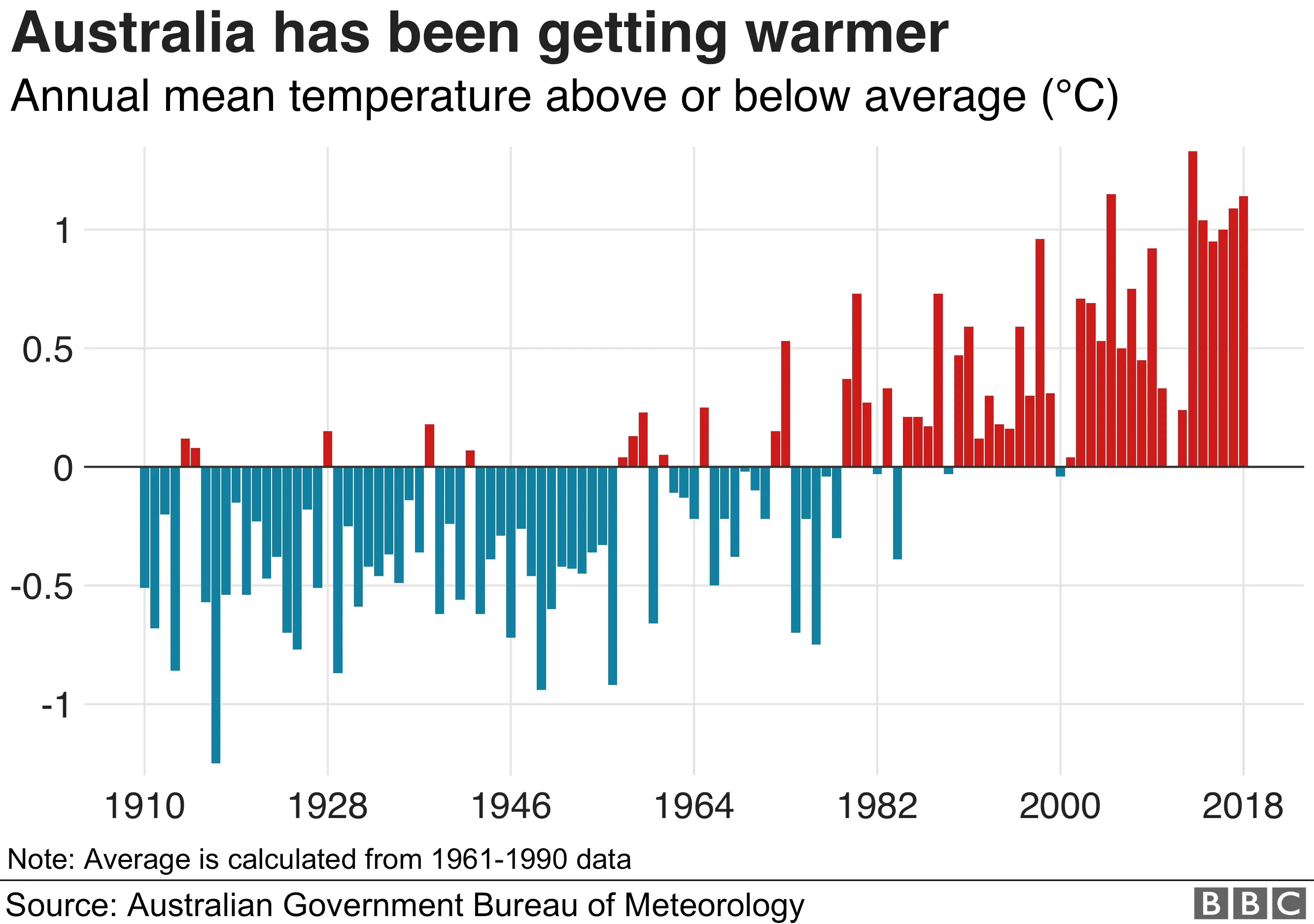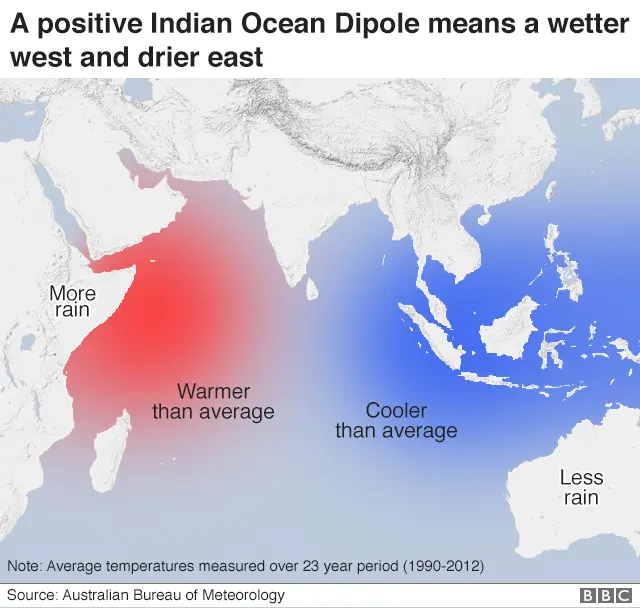Australia fires: A visual guide to the bushfires and extreme heat
Australia is grappling with massive bushfires fuelled by record-breaking temperatures and months of severe drought.
In the worst-affected state, New South Wales, fires have burned more than 3 million hectares (7.4m acres) destroying more than 800 houses. Eight people - including two volunteer firefighters whose vehicle was hit by a tree - have died.
 Getty Images
Getty ImagesWhat's the situation in New South Wales?
Hot, dry weather combined with prolonged drought and strong winds have created perfect conditions for fire to spread rapidly.
 BBC
BBC
Nearly 100 fires are burning across the state, with many uncontained and continuing to threaten lives.
The fires have been exacerbated by 40C temperatures and strong winds, creating difficult conditions for the 2,500 firefighters deployed in the field.
The small town of Balmoral, south-west of Sydney, was largely destroyed and scores of homes were razed amid catastrophic conditions on 22 December.
Major roads south of Sydney have been closed and holidaymakers are advised to "revisit their plans" to travel, the Sydney Morning Herald reports.
In northern NSW large fires are burning in the region between Port Macquarie and Byron Bay.
Further south there are fears that the vast Gospers Mountain fire, which originated in the Wollemi National Park, may merge with the Green Wattle Creek blaze in the lower Blue Mountains.
The fire in the Blue Mountains, a world heritage area and popular tourist destination, is some 64,000 hectares in size and out of control, the NSW Rural Fire Service said on Sunday.
Fire crews in the region are taking advantage of cooler conditions to perform 'back burning', where small areas are deliberately burned to create breaks to stop or slow the main fire.
Smoke from bushfires has periodically blown south-eastwards to reach Sydney, causing severe air pollution in Australia's largest city.
Flames up to 70m (230ft) in height have been reported.

What is the situation in other states?
The Cudlee Creek fire in South Australia is reported to have destroyed more than 80 homes and a "watch and act" warning remains in place in parts of the Adelaide Hills region.
 BBC
BBCIn the neighbouring state of Victoria, several large fires are burning in countryside to the east of Melbourne, with a "watch and act" alert in place for the Tambo Crossing fire.

So are bushfires getting worse?
Many Australians are asking that very question and whether these fires are linked to climate change - but the science is complicated.
Scientists have long warned that a hotter, drier climate will contribute to fires becoming more frequent and more intense.


Australia's deadliest bushfire disaster was "Black Saturday" in February 2009, when some 180 people died in Victoria.
Allow X content?
Data shows that Australia has warmed overall by slightly more than 1C since 1910, with most of the heating occurring since 1950, the Bureau of Meteorology says.


Hottest day on record
Australia broke its all-time temperature record twice last week. An average maximum of 40.9C was recorded on 17 December, broken a day later by 41.9C, both beating 2013's record of 40.3C.


The main climate driver behind the heat has been a positive Indian Ocean Dipole (IOD) - an event where sea surface temperatures are warmer in the western half of the ocean, cooler in the east.
The difference between the two temperatures is currently the strongest in 60 years.


